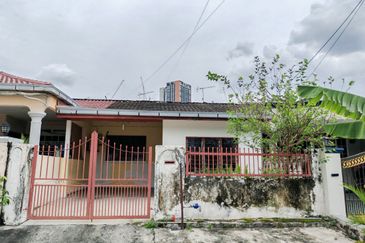
KUALA LUMPUR (Oct 8): Banks have come up with a counter proposal to the government's interest waiver plan, and some banking sources say it has been submitted to the authorities.
However, bankers were tight-lipped when asked what the counter proposal entails. Most just referred The Edge to the Association of Banks (ABM) on the matter.
When contacted, ABM executive director Kalpana Sambasivamurthy said the association is engaging and working with the relevant authorities on it. “Further communications will be issued in due course,” she added.
This is an “interesting” development, a banking analyst said on learning about the banks coming up with a counter proposal, adding this shows that banks are looking for middle ground.
“One of the issues during the implementation of the blanket loan moratorium last year were opportunistic borrowers. Should the interest waiver be given, banks will want to ensure they are assisting genuine borrowers who need it, rather than opportunistic ones,” said the analyst with a foreign research house.
The analyst also suggested that instead of a blanket waiver for a specific group of borrowers, the proposed waiver can be targeted based on borrowers who are in need and already enrolled in a system proving so, such as the one under the Credit Counselling and Debt Management Agency, more commonly known by the acronym of its Malay name, AKPK.
On Sept 14, Finance Minister Tengku Datuk Seri Zafrul Abdul Aziz announced that the ministry had instructed banks to immediately work on the exemption from interest payments for bank loan moratorium recipients under the B50 category — indicating Malaysians in the bottom 50% income bracket group — for the October to December period of 2021.
KAF Research in an Oct 1 report noted that the interest waiver could be a potential blanket programme, as Bank Negara Malaysia (BNM) told analysts in a recent briefing that banks would need to undergo a process of consultation with stakeholders, as “the impact on stakeholders including savers, would be quite significant”.
BNM also hinted that the impact to net earnings could be beyond short-term, KAF Research said, which might prompt banks to withdraw lending to certain perceived higher-risk segments.
“Further, in terms of the definition of the bottom 50% of borrowers who may be eligible, the central bank hinted that the threshold level may be those below RM5,000 income per month,” it noted.
“Those earning less than 3,000 per month make up about 17% of the household loans, while those earning less than 5,000 per month make up around 37% to 38%,” it said. In the report, the research house kept its overweight stance on the banking industry.
Maybank Investment Bank Research, in a Sept 14 report, estimated that banks under its coverage would log a total modification loss of about RM1.42 billion this year, compared with RM1.35 billion in 2020. It expected an average 7% impact to earnings for banks as a result of the proposed waiver.
In August, Bank Negara Malaysia governor Nor Shamsiah Mohd Yunus touched on the issue of waiving interest payments during the loan moratorium period during a press conference, after releasing the report on Malaysia’s economic performance in the second quarter of 2021.
She said if the government instructed banks to offer interest-free loan-repayment moratorium to borrowers, banks would have to pull back lending to conserve financial buffers, especially with higher credit losses still expected to emerge.
Nor Shamsiah also warned that banks’ credit ratings might be downgraded to reflect weaker future earnings and that this would make it more expensive for banks to raise capital. She also noted that banks' higher cost of funds would then be passed on to borrowers.
“Thirdly, confidence in banks will be affected, which could trigger liquidity stress,” she said at the time, referring to waiving interest payments in general and not specific to any segment that is being looked into now.
More recently, on Sept 24, the central bank told The Edge that it was "imperative that short-term relief measures do not incur significant long-term damage to the economy”, as it again highlighted that it was important to consider the effects of an interest rate waiver on future lending decisions by individual banks. “If banks become more reluctant to lend to this segment of borrowers due to perceived high risks, this would be a concern,” the regulator said in an emailed response on the issue.
Meanwhile, the level of loans under targeted assistance has risen from a sector average of 15% in early-2021 to 30% currently, according to information BNM shared during a recent briefing with analysts in conjunction with the release of the country's financial stability report for the first half of 2021. Cumulatively, high risk loans, as assessed by BNM, comprised about 6.8% of system loans.
UOB KayHian Research, in a report on Oct 4, noted that in the worst-case scenario, which assumes 100% of these loans were to default, system gross impaired loan ratio could peak at roughly 8.3% versus the research house’s current base case assumption of 5.2% by end-2022 to early-2023.
Get the latest news @ www.EdgeProp.my
Subscribe to our Telegram channel for the latest stories and updates
TOP PICKS BY EDGEPROP

D'Camellia Apartment @ Setia EcoHill
Semenyih, Selangor

Youth City @ Vision City
Nilai, Negeri Sembilan

Expressionz Professional Suites
KL City, Kuala Lumpur

Residensi Adelia 2 @ Bangi Avenue
Bangi, Selangor





















